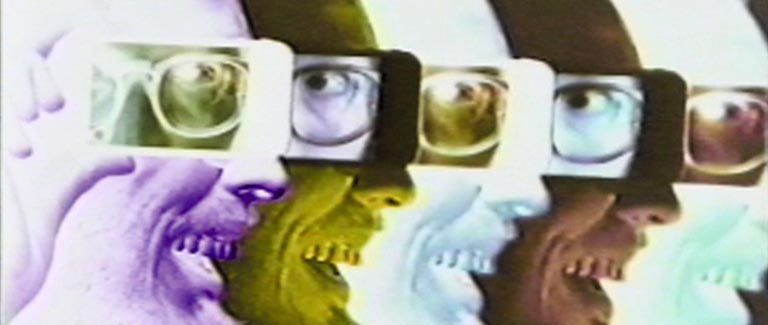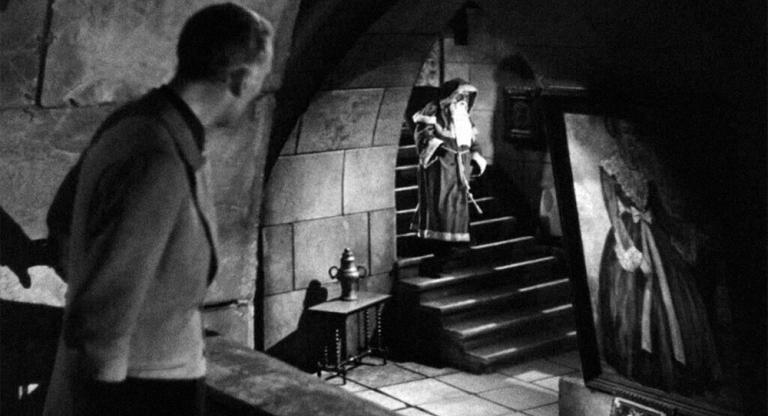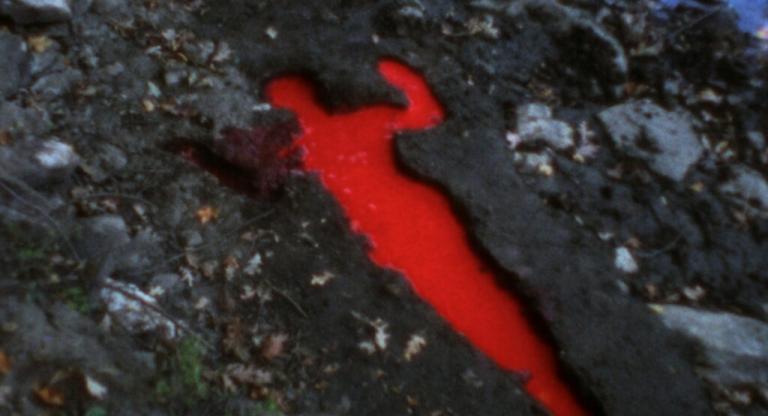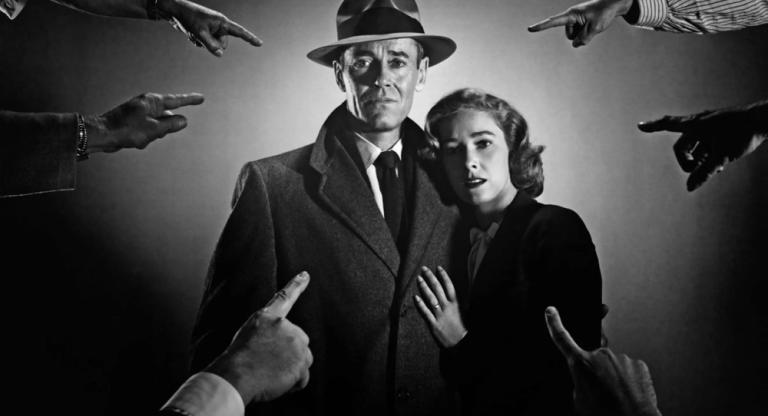Robert Beatty has been making weird things in many forms for a long time now. The Kentuckian who still calls the state home has been a part of underground music for more than 15 years, touring, in the what some call the American sub-sub underground, with his seminally spastic and harsh group Hair Police and his solo project, Three Legged Race. Beatty however has found even more recognition with his visual art through videos for acts like Helado Negro, record covers for the likes of Tame Impala and Real Estate, and this past fall a book, Floodgate Companion. Beatty’s visual work is culled from the same milieu of underground music, floor-crashing cross country friendships, obsessive media collecting, and alternative production and distribution that made his contributions to “noise” possible.
Anthology Film Archives will be presenting Beatty’s video work as part of their Show & Tell series on May 26 at 8:00 pm, with the artist providing live accompaniment for two of the pieces. Beatty’s videos are beautiful evocations of optically printed experimental animations of the past, which find their own identity through the artist’s sly humor and intuitively searching approach which gives expression to a life spent in pursuit of un-findable media, grazing the limits of the esoteric and turning trash into treasure.
Beatty took some time to talk to Screen Slate's Chris Shields, and the conversation snakes its way from Norman McLaren to Matador Records to Wal Mart.
CHRIS SHIELDS: Are you in Kentucky right now?
ROBERT BEATTY: Yeah, I’m here in Lexington most of the time. I do a good deal of traveling, but actually a little bit less these days, because I’m not playing as much music as I used to. That was kind of the main thing that got me out of Lexington. And tomorrow I’m actually driving to St. Louis to play a show there. I'm playing under my own name now. I used the name Three Legged Race for so long, it kind of wasn’t what I was doing anymore because the music that I’m making now has changed quite a bit from even like four or five years ago, so I just felt like it was maybe time to go solo. (laugh)
CS: I think that is a common trend with underground artists and musicians, where you shift from a project that is less based on specific instruments and goals and it just becomes your music?
RB:Yeah, and honestly a big part of it too is the recognition that I’ve gotten doing the art work. People know my name more than they know even Hair Police or Three Legged Race or anything.
CS: Is that weird to you?
RB: Yeah, it is a little strange, because I’ve always preferred to lay low and just let the music and art speak for itself, more or less. I’m not like putting my face on the cover of records or anything. So, it’s weird how you know even if your art is pretty abstract you know or out there, people still want to associate a person with it.
CS: In the world of the kind of music you make, let’s call it "noise," there isn’t a lot of name recognition. Most people live and die performing under a certain moniker
RB: Yeah, like people’s projects, you know that name more than you know their actual names. And I saw that happening with me, people started to act like my name was recognizable.
CS: I think that’s really cool. Is there a divide at this point between people who know your music and people who know your videos and album covers and graphic work?
RB: I think what I’m doing is still relatively obscure, even though I’m doing things that are higher profile and for bigger bands. I think the people who are investigating to see who made the art work are the type of people that are going to investigate beyond that and find out I do music and that I do video. And so it seems to me that anybody that knows my stuff digs a little deeper and figures out I don’t just do record covers.
And it’s been cool, especially with the book that I did in the fall, Floodgate Companion. I did a book tour and a variety of people came out for that, because I had a lot of friends and people that I know from making music, but then there were also kids who were Tame Impala fans who came out to the book signings. I’ve even had at shows that I played, people that are you know strictly coming to what I do through Tame Impala or Neon Indian or Thee Oh Sees, but the music that I play isn’t quite in the same realm. (laugh) But it’s been cool to see for the most part that people are interested once they find out.
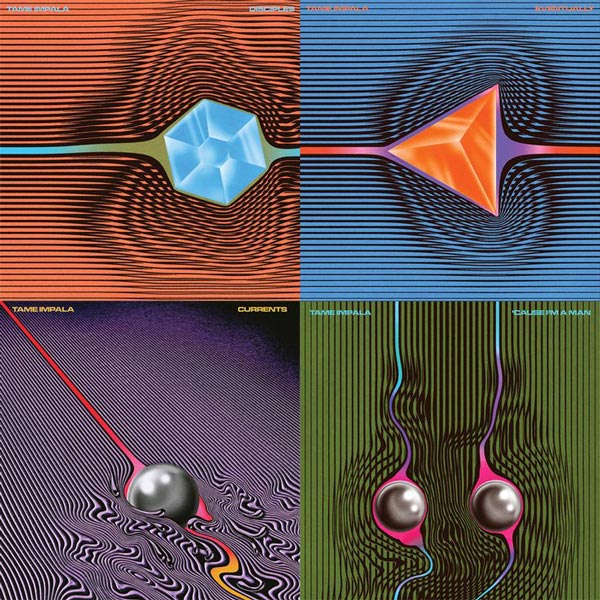
CS: I read in an interview with you that that is how you got into a lot of the stuff you’re interested in, you see a record cover, it’s not every person that would try to find out who designed it.
RB: For sure, and that’s just in my nature, because there’s little bits of information that leads to something else and it just kind of grows from there. That’s kind of how I’ve learned about any art or music is just following little nuggets of information. One thing to another.
CS: That’s interesting, because in the more recent video work with the clean lines and early computer stuff, there is a kind of searching quality, they flow and feel intuitive, even though your work seems to take a lot of planning.
RB: The way I work, especially with video, is very intuitive. I generally don’t plan things out in advance at all. I might make some sketches, and obviously doing the animation stuff there’s a lot of time of that goes into that, but I kind of just go from one frame to the next. I do whatever feels natural and just edit it all together in a way that makes some sort of sense. I think a lot of stuff that I do has that meandering, flowing quality because that’s the way it’s made (laugh). Like when I do record covers, there’s not much sketching, it’s all kind of sit down and make stuff. Honestly the way I view a lot of what I do, music or 2D art or video, it’s all kind of collage to me. It’s just that I’m making all the material that I’m collaging together. That’s kind of the way I work. Just generate stuff and piece it together.
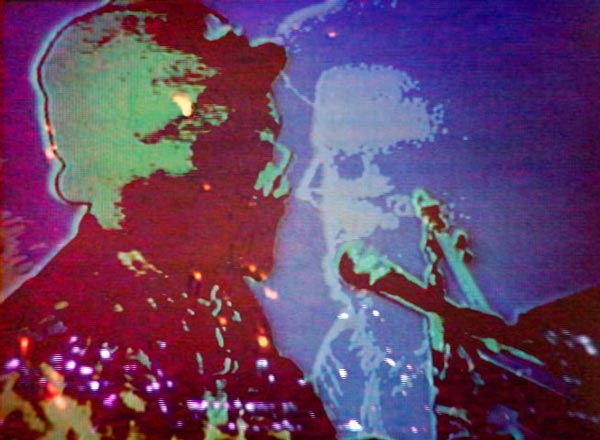
SS: And you’ve done the work of the research and everything you’ve taken in, you know through your interests and your life. I was looking at some of the animators that you are inspired by. You take that in and make that into your material?
RB: Yeah, for sure. I like to think that I’m doing something new, but I definitely wear my influences on my sleeve a little bit. There’s a couple of music videos I’ve done recently, the most recent one for Helado Negro and the On Fillmore video, both of those are done in the same style and they’re very much inspired by Pat O’Neil and Adam Beckett, like all of these people who were doing experimental animation that was based in loops.
A lot of the stuff I’m emulating, obviously I’m doing everything digitally on a computer, but I’m trying to get the feeling of optical printing on film because so much of the stuff that I love has that quality to it. And I don’t want to make things look like they’re old, but there’s a certain quality to that work that is a result of the process used to make it, that I really love and, trying to figure out some way to emulate that without it seeming an effect laying over top.
SS: I was very impressed with the work and my inability to tell if it was made digitally or through optical printing. It brought to mind, yes, early computer films but also Norman McLaren and Larry Jordan.
RB: Of course and McLaren and Larry Jordan both used tons of optical printing in their work and it glows, you know , it has that quality. You’re seeing light coming through film. And it glows in this way that just like isn’t really possible with video. It has such a certain characteristic. It similar to what I do with the record covers, all of that stuff is digital as well but I’m trying to emulate old airbrush and techniques that are dead but I believe still have life in them.
SS: Your album cover work seems to fit the sophisticated musical vocabulary of the artists you work with, it’s part Krautrock and yet still very contemporary. It captures the historical consciousness and forward thinking experimentation that seems to characterize the underground.
Do you listen to the record before beginning work on the covers?
RB: Yeah for the most part, I mean you know sometimes just because of the you know actual process, sometimes I’m working on artwork for a record that hasn’t been completed yet, so I’ll hear demos or rough mixes. But I’m working on a couple records right now where they’re bigger projects, and it’s not possible for me to hear the music, because they’re records that if things "leaked," it would be a big deal. (laugh)
But yeah, for the most part I’m listening to the music while I work. And it’s cool, because I’m lucky in that I get to work on projects that I want to work on. That’s not really anything I’ve ever done that I’m not psyched about being a part of in some way or another.
And that’s the other thing that I found is that it tends that the people that gravitate towards my art and want to use my art for their covers are people whose music I actually enjoy. It’s nice that there is a common ground there in some way.
SS: There is a real consistency to your work and the artists you work with. Do you identify with noise of the early 2000s and see your work as part of that movement?
RB: Yeah, I mean, to some extent. I’ve never really felt, even when Hair Police was touring a lot and playing shows and we did pretty well for a band that makes as fucked up as music as we do you know? (laugh) Like, even then I felt like we were kind of doing our own thing but there just happened to be a lot of people we were friends with around, and to me it’s always been people doing their own thing and it just happens that they work out together.
It is a very direct path from that to where I ended up today, because people that I met playing shows back then ended up you know doing things like Dan Lopatin, who does Oneohtrix Point Never. I met him playing shows before he was even doing that project, met the guys from Real Estate that way, and Peaking Life too to some extent, they were kind of part of that scene in a few different forms. All kind of bands that came out of the underground and are pretty high profile artists now. I started touring and playing music probably in like 2001, so I’ve been doing this for 15 years or more. It’s interesting see the path that everyone has taken and who’s still here doing stuff and who’s kind of taken a little bit of a step away. When you’re young you obviously have more time to do weird music and then life gets real (laugh). People kind of drop off.
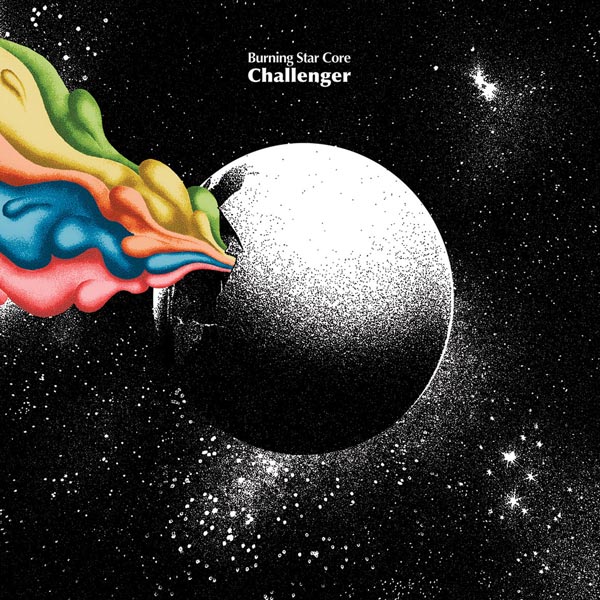
SS: Not everyone can make that transition.
RB: I’ve always know that this is what I’m going to do, like whether it was successful or not, and the only thing I really feel like I can do. I’ve just stuck with it and been here the whole time doing what I do, and it’s been good so far.
SS: I think I read that you didn’t go to art school?
RB: No, I didn’t go to college. Not at all. And that’s part of it, too. I just started playing music and touring when I was 19, and that’s kind of how I have any sort of art career now is just through touring, meeting people and doing things in that world of the noise underground and sticking with it this long.
SS: It sounds like an alternative networking, rather than the go to art school, go to grad school, move to New York, hang out at the parties and hope for something to happen, you did it in a very different way.
RB: Yeah, and that’s the thing too—I’ve been in Kentucky the entire time. And people have a hard time understanding that. They are like, why didn’t you move to New York, and I think it’s worked out to my advantage in some way being from Kentucky, because there’s some sort of novelty to it. People are looking me up, and they’re like “Oh, this guy’s in Kentucky? Not New York or LA?” Or even like Chicago. So I think there’s a lot of factors that went into how I ended up where I am today.
And even showing at Anthology Film Archives. It’s such an insane thing. My video work, I love doing it, but it’s never really been my main focus, it’s always just been something that I did because I wanted to do it and it’s never been, it’s much less high profile than some of the other stuff that I do. I think a lot of people don’t know that I do as much video as I do, and a lot of it too is with the Resonant Hole stuff, the collective work, which is all very collaborative, that’s not just me that’s a dozen or so people here in Lexington working on stuff all together. It’s all kind of people who have played in bands here or the years. So that stuff is kind of out there but it doesn’t really have my name on it, and I’m not really pushing it. That kind of stuff I just let people find it. It’s cool to have it recognized by something like Anthology where I can present all this stuff I’ve made over the years, which are things people haven’t seen as much. Even though most of the stuff I’m screening you can see it on the Internet on my website, it’s around.
SS: How did it come about?
RB: Jed from Anthology sent me an email at the beginning of the year. And I’m not sure how that came about (laugh) I don’t know.
SS: Do you submit to film festivals?
RB: No, I usually just do stuff for art shows or do things to like show, but it’s not , I’ve never really pursued the video stuff in a way that was showing at festivals or whatever. People ask me to screen things from time to time but it’s never, it’s never really been something that—I don’t really push what I do in that way.
That’s one nice thing about doing the record covers and the illustrations, is it’s a really nice way to get stuff out there. I do the work and it’s done and then it’s out there propagating itself throughout the world and people see it. Which doesn’t happen as much with video unfortunately. Even doing music videos these days, you have the one day that it premieres on the Internet and that’s like the day that people watch it. And you get a couple thousand views, and that’s it, that’s the life of that video, even though it’s something that you know I’ve put a lot of work into. That’s one reason I don’t do as many music videos as I used to because it’s a weird medium, because it’s just kind of feels like very tossed off in a way.
SS: And that’s unfortunate because your work can stand up to several viewings.
RB: Yeah, and that’s kind of the main thing with music videos especially, I try to make sure that—I want to make something that makes the song feel shorter than it is, you know? That’s kind of my goal is to make four minutes feel like 2 minutes. (laugh) And just because I watch so many music videos that kind of just drag on, especially ones that try to be narrative, it’s just so rare that you see something that does that in a way that’s successful and engaging you know.
SS: That’s a great approach.
RB: Especially working the way that I do, most of the video stuff I do is pretty abstract. The video stuff for me too is a good way to put some sort of humor in there that’s maybe not in some of my other stuff. It’s like you can do things that are little weird gags easier than you can without motion.
SS: When was the first video that you made?
RB: I think it was probably the Jeanne Vomit-Terror “Mirror School” video, which was kind of the beginning of the video stuff for Resonant Hole. And yeah that was 2010 or something. I haven’t really been making videos stuff for that long just because I was never happy with the way that digital video looked, like I always wanted things to look different and around that time, and that video is actually shot with a crappy old Casio digital still camera that happens to have a video output so you could run a video output to a VCR and record it, so you could make like a slideshow of your photos and record it. I think the resolution on that was like 120 pixels wide, so that’s the reason it looks the way, it’s almost looks like a pixel vision camera or something because it’s so low resolution. When I did that video people were asking, “How did you get it to look so grainy and old?” Well, I used a terrible camera which I liked the way it looked better than a digital camcorder or whatever so.
And so then shortly after that I inherited an old tube television camera, an old RCA like pre-VHS tube camera. So that’s what a good deal of the video stuff I’ve done is done with that camera, so that’s a big part of it was I didn’t like doing video because I wasn’t happy with the way any available technology to me looked.
I don’t really like buying things. I kind of just let equipment come to me. Everything that I used, even down to my computer is stuff that was basically trash that people were getting rid of or whatever. Kind of make do with what I can find on my own.
SS: I’m familiar with that alternative economy (laugh)
RB: For sure, and especially like now you can get VCRs and CRT TVs for absolutely nothing. People do not want them. But it’s even getting to the point now where it’s getting hard to find that stuff. So I think it will become a bit of a commodity again soon.
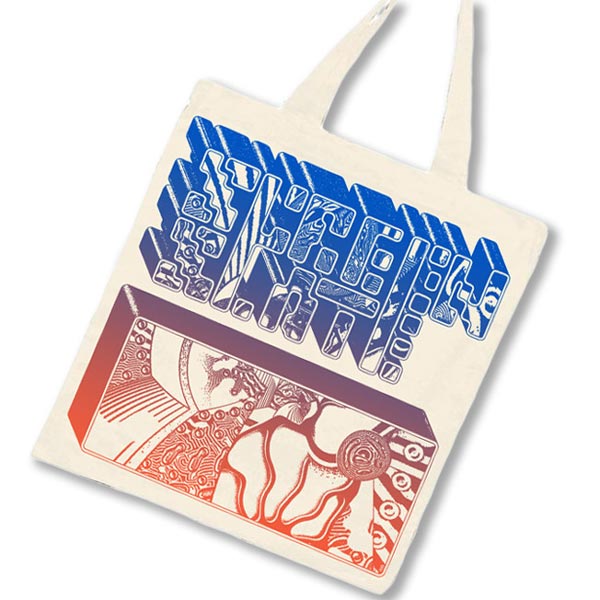
SS: Is there something you can do in video you feel like you can’t do in your music or 2D graphic art?
RB: Yeah, and this kind of goes back to the whole weird gag thing. You can do so much like with a time-based medium like video where the timing is everything. You can have something, it’s like all about how long you hold something and where it goes to the next thing, and there’s a rhythm that’s in it. it can convey things I could never convey in other mediums, even music.
There is a lot of old experimental film stuff that is kind of goofy and has that element of comedy. Someone like Robert Nelson, like Bleu Shut (1971) and Oh Dem Watermelons (1965)—those movies are unreal, some of the funniest things ever made, but they’re so weird and abstract, and so much of it is about timing. It’s just the way he edits stuff. And those were a huge influence on the way I think about video and editing and drawing things out a bit too long and going to something else. It’s a tension you can’t get other ways.
SS: And that’s stuff you encountered just through you own interests, and through searching?
RB: Yeah, and I’m pretty obsessive about you know just collecting and researching and I have lots of friends who have shown me stuff over the years. A big part of it has been just meeting people and pre-internet someone having some VHS tape of like Jordan Belson movies or something. And you’re like oh my god what is this. I’ve never seen anything like this. And just going from there.
There’s a design magazine called Graphis and they put out annuals every year, so I collect the older annuals from the 60s and 70s, and they all have a section in the back that’s animation and experimental film. So there’s a selection of stills, and there’s still stuff from those that just doesn’t exist. It’s impossible to find. So that’s the thing, even with the internet where you can kind of see everything there is to see, there’s still like these records of things that are unavailable in some way. And that’s kind of what drives me, just (laugh) finding that stuff.
It’s like when I was a kid going to record stores I’d always have a piece of paper in my pocket with a list of bands to look for. I think a big part of the way that I do things comes from growing up pre-internet. I didn’t really have the Internet until I was like 18 or something so. And just being in a small town in Kentucky too. It wasn’t like you could just go to the record store we had to like I didn’t grow up in Lexington, I grew up outside of Lexington and you know there wasn’t anything in the town I grew up in other than like a Wal Mart.
SS: Did you have a group of friends that were kind of into the same stuff?
RB: Yeah for sure, Trevor Tremaine who plays in Hair Police with me, we grew up together and once we got our licenses we would drive into Lexington every weekend and go to the record store and, but I mean we were just kind of getting stuff from mail order catalogues, whatever we could find at Best Buy or Wal-Mart or whatever there was. (laugh) Part of that is the weird search to find something you don’t really know anything about.
That’s a big part of what I feel like I’m trying to do with my art is capture that feeling, that sense of wonder and like curiosity more than anything. Where is this going to lead, what’s next after this. That curiosity drives me to know more about something, even if it’s not possible.
SS: Being from a small town in Kentucky, do you feel the searching is a way of expanding your world?
RB: Yeah, I mean especially it’s interesting because I can do what I do from anywhere , New York or London because of the Internet. But before that your whole world could be in a catalogue from a record label and that was like all you knew about.
I still remember things from like, Matador Records had a catalogue of not just the stuff on Matador, but they distributed a lot of other small labels, and they had descriptions of all these records , and I would read descriptions of records that I maybe wouldn’t hear for like 10 years or something. And I remember that stuff still. That’s part of it, just reading a description of a record in a catalogue and imagining what that would sound like (laugh). And that goes back to the Graphis catalogues, seeing stills from these films and wondering, like I don’t know what this is but I have to make it myself.
It’s like finding a Jack Chick pamphlet in a gas station bathroom. In the south you are in a truck stop and on the back of the toilet there will be like a Chick pamphlet, and you’ll bee like what the hell is this weird religious comic book. It’s totally insane. And it’s like something like that where you find something, you don’t know anything about it and you just have this thing, and years later you find out other people all over the country have that same experience.
